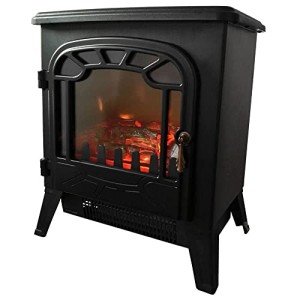20 Irrefutable Myths About Traditional Fireplaces UK: Busted
The Timeless Appeal of Traditional Fireplaces in the UK
Traditional fireplaces have actually long been integral to homes throughout the United Kingdom, going beyond simple energy to become focal points of warmth, convenience, and visual beauty. This article explores the enduring appeal of traditional fireplaces, exploring their history, style variations, setup considerations, and their modern-day importance.
Historic Significance of Fireplaces
The fireplace has actually played a central function in British homes since middle ages times. Originally, they were important for heating and cooking. Over the centuries, with the arrival of central heating and technological improvements, fireplaces have actually changed into symbols of heritage and style.
Secret Historical Milestones
Date
Turning point
Description
12th Century
Intro of Chimneys
Enabled indoor fireplaces to be typical, better ventilation.
16th Century
The Renaissance impact
Fireplaces became more ornamental, showing the era's styles.
18th Century
The Georgian Era
Developed complex mantels made from wood and stone.
19th Century
Victorian Era
Introduction of cast-iron and tiled fireplaces.
20th Century
Decrease and Modern Design
Shift towards gas and electric, with some revival of traditional styles.
Kinds Of Traditional Fireplaces
While contemporary designs concentrate on minimalism, traditional fireplaces frequently exhibit elaborate workmanship and historical significance. Here are some popular kinds of traditional fireplaces typically found in the UK:
Open Hearth Fireplaces
- Characterized by a large opening and normally constructed from brick or stone.
- Offers a cozy atmosphere and the noise of crackling flames.
- Needs an appropriate flue to redirect smoke outdoors.
Wood-Burning Stoves
- Confined systems that burn wood for heat, typically including a glass door.
- More efficient than open hearths, providing better heat retention.
- Available in various styles, from rustic to contemporary.
Cast Iron Fireplaces
- Popular in the Victorian era, known for ornate styles.
- Durable and prominent for exceptional heat conduction.
- Generally function detailed patterns or motifs, boosting aesthetic appeal.
Tiled Fireplaces
- Frequently embellished with decorative tiles, these fireplaces display creative flair.
- Typical in the 19th century, tiles can include scenes or floral designs.
- Typically matched with wood or cast iron elements.
Marble Fireplaces
- Prominent for their elegance, these fireplaces are usually customized.
- Marble provides an elegant finish and matches different interior styles.
- They require mindful installation due to their weight.
Table: Comparison of Traditional Fireplace Types
Fireplace Type
Heat Efficiency
Aesthetic Appeal
Maintenance Needs
Fuel Type
Open Hearth
Low
High
High (chimney cleaning)
Wood
Wood-Burning Stove
High
Moderate
Moderate (wood supply)
Wood
Cast Iron
High
High
Low
Wood/Gas
Tiled
Moderate
Extremely High
Low (if non-usable)
N/A
Marble
Moderate
Extremely High
Moderate
N/A
Considerations for Installing a Traditional Fireplace
Setting up a traditional fireplace can boost a home's character however features specific considerations. Here are some points homeowners should remember:
Building Regulations: Always examine local structure codes and regulations. Best Fireplace may need permission, particularly if structural modifications are required.
Material Selection: Choose materials that match the home's architecture and individual design. Think about practicality along with aesthetic appeal.
Ventilation: Ensure appropriate ventilation through a chimney or flue to avoid smoke and gases from collecting inside your home.
Safety Precautions: Install carbon monoxide detectors and ensure all precaution remain in place, particularly if utilizing wood-burning choices.
Expert Installation: Engage a certified contractor to make sure safe and effective setup, abiding by safety standards.
Benefits of Traditional Fireplaces
Regardless of the rise of modern heating services, traditional fireplaces stay cherished for numerous factors:
Aesthetic Charm
- Adds character to any space.
- Functions as a social focal point, boosting gatherings.
Mental Comfort
- Provides heat not just physically but mentally.
- Creates a cozy atmosphere ideal for relaxation.
Value Addition to Property
- Improves the appeal of a home to prospective buyers.
- Typically increases residential or commercial property worth due to their desirability.
Environmental Considerations
- Wood can be an eco-friendly resource when sourced sustainably.
- Traditional fireplaces can contribute less to energy bills compared to electric systems.
Frequently Asked Questions (FAQs)
1. Are traditional fireplaces energy efficient?
While traditional fireplaces may not be as energy-efficient as modern heating unit, enhancements in design, such as the installation of glass doors, can improve their efficiency. Best Fireplace Online -burning stoves are especially known for being more effective than open hearths.
2. How typically should traditional fireplaces be cleaned?
Chimneys must be inspected and cleaned a minimum of once annually, specifically if the fireplace is used routinely. This avoids creosote accumulation, which can lead to chimney fires.
3. Can Best Fireplace use a traditional fireplace for gas heating?
Yes, traditional fireplaces can typically be converted to utilize gas. This involves setting up a gas line and might need a conversion package depending on the fireplace design.
4. What are the best fuels for wood-burning fireplaces?
Seasoned hardwoods such as oak, hickory, or maple are suggested for wood-burning fireplaces as they burn hotter and longer than softwoods.
5. Can traditional fireplaces be utilized in modern homes?
Definitely! Many modern styles integrate traditional aspects, permitting an unified blend of styles. Furthermore, traditional fireplaces can add an unique touch to contemporary homes.
From their historical significance to their modern-day importance, traditional fireplaces remain an essential feature in numerous UK homes. Their enduring appeal is not only rooted in their functionality but also in the warmth and beauty they provide. Whether one select a traditional open hearth or a magnificently tiled fireplace, the option adds to creating an inviting environment where memories can be made. As house owners become more conscious of aesthetic appeals and nostalgia, traditional fireplaces are poised to preserve their appeal for generations to come.
